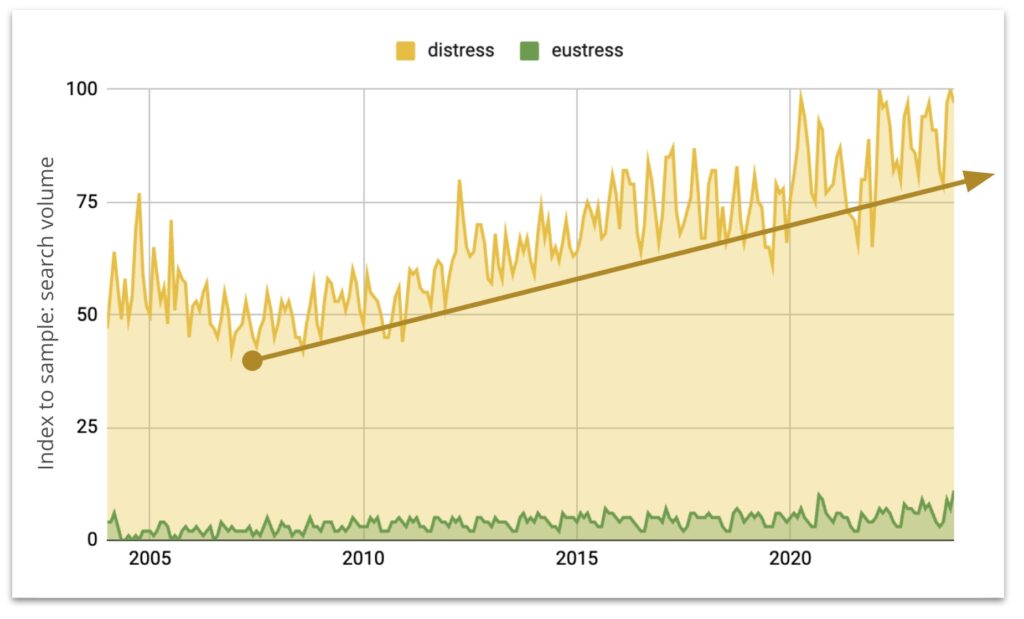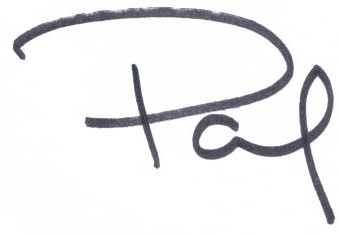The world is on fire.
Free and fair elections are under attack. The middle class is disappearing and too many people are going hungry. Misinformation threatens to distort our reality at every turn. Violence rages in every corner of the earth. And our finite natural resources are being depleted.
“The optimist creates the future, the pessimist endures it.”
These words come to us not from a diplomat or a literary figure, but from a 20th century Hungarian endocrinologist by the name of Hans Selye. Selye was one of the luminaries of his time in the study of biological stress. One of his defining contributions to society was his thesis that stress is a universal response (contrary to modern day, where we tend to have purely negative connotations of stress). If the provoking impulse is negative, that stress is known as “distress.” And if the provoking impulse is positive, then it’s called “eustress.”


This polarity ought to be comforting to anyone living in 2023. And yet, we seem to have an obsession with our own distress, while eustress is barely in our public lexicon. Consider this data to the left, sourced from Google Trends and spanning nearly 20 years, indicating the relative volume of interest (measured in search queries) for either term. The relativity of the two lines is discomforting. And the upward trend of the distress line is jarring.
Where does it end? Can that yellow trendline continue to climb upward into perpetuity? Will we ever move the needle on the green line? It all comes back to Selye’s quote.
The role of social impact investment
In recent years, the world of finance has witnessed a significant shift towards social impact investment. According to the Global Impact Investing Network (GIIN), these are investments made in both emerging and developed markets, with the intention to generate positive, measurable social and environmental impact alongside a financial return. It goes beyond traditional philanthropy by adopting an investment-focused approach, emphasizing the importance of measurable social outcomes alongside financial performance.
The global impact investing market stood at just over USD $700 billion in 2019, but with the COVID-19 pandemic and other accelerants, the GIIN estimates that in 2023 it is worth nearly USD $1.2 trillion – a growth figure of 63% (Forbes: “Demand For Impact Investing Is Rising. Here’s Why”). This social impact investment is routed toward a number of meaningful causes, including renewable energy, conservation, microfinance, sustainable agriculture and numerous social services (e.g. housing, healthcare, and education).
New sources of social impact thought capital
The industries of today are not alone in leading this movement. A new generation of thought leaders are growing up in a world disrupted by all the aforementioned forces, prepared to roll up their sleeves and address these problems head-on. Gen Z is generally recognized for having a strong sense of values, including social justice, environmental sustainability, and equality. They’re a new generation with deep concerns about the impact their businesses have on the world. This shift in mindset has paved the way for the rise of mission-driven companies that prioritize purpose alongside profitability:
- 82% of Gen Zers are concerned about the state of the planet, and 72% have already changed their behavior to reduce their impact on the environment (source).
- 78% of Gen Z respondents said that businesses have a responsibility to address urgent societal issues (source).
- 93% of Gen Zers have taken a step toward exploring business ownership (source).
This last point cannot be understated. With their innate entrepreneurial spirit, these young changemakers are constantly seeking innovative solutions to address pressing social and environmental issues.
Proving social impact with measurable outcomes
Having established that the money is flowing to social impact investing, and the industry leaders of today and tomorrow are providing both the human capital (labor) and the thought capital (ideas), what is the connective tissue between the two?
The answer is simple: outcomes.
Stakeholders (investors, customers, and partners) want tangible evidence of the impact their support is making. Outcomes are the language by which a social entrepreneur validates their mission, showcasing the underlying effectiveness of the business at solving the stated problem – while also helping them to attract stakeholders, secure funding, and inspire others in their journey towards creating positive social impact. While revenue growth and user/customer acquisition are traditional business outcomes, impact investors look at a very broad array of potential outcomes to qualify their investments.
(For details, see “Examples of social impact outcomes from different industries.”)
Ultimately these measurable outcomes serve three key purposes for mission-driven organizations:
- Quantifying their achievements and demonstrating tangible results, to capture the attention and support of potential investors and funders.
- Acting as a feedback mechanism, allowing them to learn from their successes and challenges, and continuously refine their approaches to maximize their social impact.
- Motivating others to join the cause, inspiring participation and collaboration, and acting as a catalyst for collective action.
Why Mission Flywheel?
It is at the intersection of human capital, thought capital and social impact capital, that I’ve chosen to found Mission Flywheel. (What’s a flywheel?)
I spent my first 15 years in the media and advertising industry, as a founder and managing partner of a global media agency (Clicksharp, later House of Kaizen) as well as leading sales teams at Google and Foursquare. Working with big brands like Chevrolet, Coca-Cola, AT&T and Target, I learned that marketers are the best in the world at measuring human behavior, and using those insights to make big capital investments. I’m applying what I’ve learned from them, to help mission-driven organizations prove their impact and inspire confidence in their customers and investors.
During this time I worked with a number of organizations on a volunteer/advisory basis, including Make a Wish Foundation, Fairtrade Labeling Organization International, University of Michigan Alumni Scholarship Fund, and Mouse.org. It was through this work that I began to gravitate toward a career in social impact.
In 2020, I moved into the education technology industry, as a revenue leader at companies in workforce education, like Udacity and Tech Elevator. I watched my work directly impact both individual lives and society at large, contributing to major breakthroughs in workforce development, economic development, diversity/equity/inclusion (DE&I) and innovation in adult education.
I got hooked on the feeling of providing solutions to big problems.
And that’s where Mission Flywheel comes in: to help social enterprises prove their impact with measurable outcomes. We support mission-driven organizations to achieve their goals by augmenting five key business functions: sales, business development, customer success, marketing and revenue operations.
Hans Selye reminded us that the future is ours to create. The world may be on fire, but people with bright minds and deep pockets are rushing into that fire, armed to the teeth with ideas, resources and boundless energy. I intend to join them, and I hope to see you there too.


0 Comments